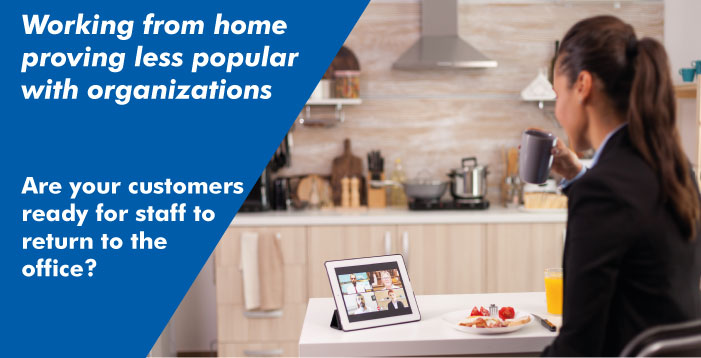As we experienced the earlier devastating “waves” of the pandemic and governments responded with a stay at home lockdown policy, business and public sector organizations were forced to adapt their working practices and instigate a work from home policy. Within a few months of this “new” working practice the media was awash with commentators and business leaders, in particular those in the tech sector, proclaiming “Office working is dead, long live home working “, as they championed the virtues of remote working. There were predictions of large city centre corporate offices disappearing or becoming smaller “part time” collaborative environments, as many office workers threw off the shackles of the rush hour commute and adopted dining rooms, bedrooms, kitchens or even garden outhouses as their new workplace with Zoom calls filling diaries.
Moving forward to today, it is interesting to note that there appears to be a significant shift in sentiment relating to staff working practices. Many analysts, including the Centre for Cities think tank in the UK, believe that a “Hybrid” blend of home and office work is expected to be popular as we gradually recover from the pandemic. However, in the longer term there is strong evidence to suggest there will be a significant shift back to pre-COVID working patterns with a five-day office week potentially becoming the norm again within two years.
In the technology sector, the move away from mass home working is already underway with Google recently writing to its employees and announcing that they were bringing forward the timetable of moving people back into the office. As of September 1, employees wishing to work from home for more than 14 days would have to apply to do so and employees were also expected to “live within commuting distance” of a Google office. In addition, Tim Cook from Apple made a recent (unpopular) declaration that Apple staff will need to spend most working days at the office by September.
As IT departments review their corporate workplace infrastructure and business services, in response to the return to the office calls, the print environment may not be seen as a high priority. However, with more than three-quarters of Industry leaders in a recent report stating that printing is critical or very important to their day-to-day business operations and 64% reported suffering a print related data loss, failure to review the corporate print environment could have a significant impact on an organization’s data security, productivity and operational costs.
If you work with enterprise or government customers to support the development of their infrastructure and business services, introduce them to Ringdale’s FollowMe® Printing for Enterprise and Government. FollowMe is a leading enterprise level print management solution that includes secure printing capabilities for data loss prevention (DLP) and provides essential compliance and tracking features for a scalable and evolving modern workplace.
Contact the FollowMe team at Ringdale to discover why leading enterprise and government organizations rely on FollowMe to support their print management requirements or visit www.followme.ringdale.com
SOURCE Ringdale